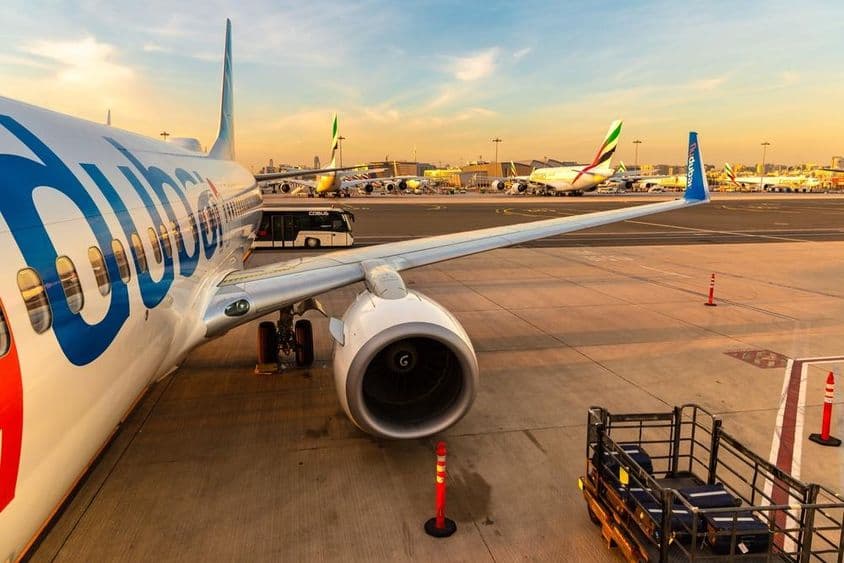Flydubai's Struggle with Low-Cost in Middle East

Why Doesn't the Low-Cost Model Work in the Middle East? Insights from Flydubai
The aviation industry has undergone tremendous development worldwide over recent decades, especially due to the proliferation of the low-cost airline model. In Europe and the United States, discount airlines have carved out a significant portion of the market, democratizing air travel and enabling more people to take advantage of aviation's opportunities. However, based on the experiences of Flydubai, headquartered in Dubai, it seems that the low-cost model does not operate in the Middle East the same way as it does in the West. But why?
The Differences in Open Markets and Regulatory Environments
In Europe, the single aviation market of the European Union allows any airline registered in an EU country to freely fly to any point within the EU. A similar regulatory flexibility prevails in the United States, where the unified legal environment and federal regulations support this type of operational model.
In the Middle East, however, the situation is different. Borders between countries are strictly regulated, and bilateral aviation agreements significantly restrict the operational possibilities for individual airlines. This is especially true for busy routes like the UAE–India route. Although Indian citizens form the largest diaspora in the United Arab Emirates, Flydubai can utilize only 1.5% of its capacity towards India, as New Delhi does not permit an increase in flight numbers from UAE-based airlines.
Structural Pressure on the Low-Cost Model
The success of the low-cost model is based on an airline's ability to operate a high number of flights at low cost, often exploiting short-haul, frequently visited routes. For this, continuous access to new destinations and flexible route planning is essential. However, when an airline can only fly to a limited number of destinations, it renders the model economically unfeasible. In Flydubai's case, even though there is market demand, flight number restrictions tie their hands.
Moreover, the customer base is significantly different. While in Europe, the discount model adequately serves leisure travelers and cost-sensitive business passengers, in the Middle East, the passenger profile is much more diversified. Different nationalities travel with varying needs, so a unified, minimalist service package is not attractive in all cases.
Flydubai's Transformation: From Low-Cost to Full-Service Provider
When Flydubai commenced operations in 2009, it did so specifically with a low-cost model. Over the years, however, it has continuously adapted to the market's features, and by 2023, it had introduced a Business Class. This decision proved successful, and according to the company's management, it had an explicitly positive impact on the results. In this spirit, they are also planning to introduce a Premium Economy class, especially on Boeing wide-bodied aircraft whose delivery is due in the coming years.
This transformation shows that Flydubai does not rigidly adhere to the low-cost model but has recognized that the market dynamics in the region require a different type of service. Additionally, with premium services, they can satisfy not only business travelers but also passengers looking for comfort and extra services.
Competitive Environment, Geopolitical Challenges, and Low-Cost Retreat
Competitors find it difficult to establish a foothold in this region. A good example is Wizz Air Abu Dhabi, which, despite initial high ambitions, eventually withdrew its operations. Behind this decision were geopolitical tensions, regulatory challenges, and fierce competition with other discount airlines.
The example of Wizz Air Abu Dhabi also shows that the low-cost business model—which is highly effective in Europe—cannot operate in the same way in the unique regulatory, political, and economic environment of the Middle East and Asia. The market is influenced by factors such as bilateral political relations, local aviation regulations, and the protection of national interests.
What Could be the Solution?
Flydubai's example highlights that flexible adaptation, understanding local conditions, and catering to the diverse needs of passengers are crucial for airlines operating in the region. Instead of forcing the classic low-cost model, it might be worth considering hybrid solutions—where basic service is complemented by premium options.
Furthermore, long-term it is conceivable that countries in the region will open up to each other, reducing obstacles through the liberalization of the aviation market. This would not only be advantageous for airlines but would also provide more opportunities and better prices for passengers.
Conclusion
The case of Flydubai demonstrates that for low-cost airlines, the Middle East and Asia region does not currently offer as favorable an operating environment as Europe or the United States. Restrictions, regulatory differences, and the diverse passenger profile all contribute to the inability of the low-cost model to replicate the same success. Rather than interpreting this as a failure, local players—like Flydubai—choose adaptation and elevating service quality, which can lead to more stable and sustainable operations in the long term.
(Source of the article: Based on a statement from Flydubai's leader.)
If you find any errors on this page, please let us know via email.


